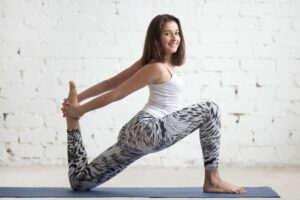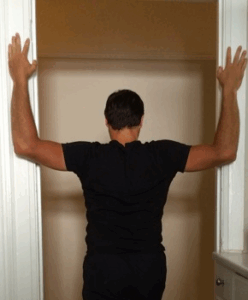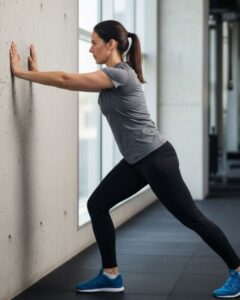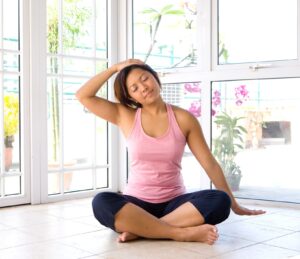Today we’re tackling a topic that affects so many of us: the muscle groups we neglect until they start screaming for attention. These five muscle groups – hip flexors, upper back, hamstrings, calves, and neck are often overlooked in workouts or daily care, leading to pain that can disrupt your life.
We’ll share some simple, actionable tips to keep them healthy. Dive in and learn how to keep pain at bay with some self-care and, occasionally, with a little help from expert massage therapists.
Why Neglected Muscles Cause Pain
Let’s look at why neglecting your muscles can cause problems. Long hours of sitting, repetitive movements, or even intense workouts without proper recovery can leave certain muscles tight, weak, or out of balance. This misalignment often leads to discomfort or even injury.
At Dreamclinic, we see it every day—from office workers with stiff necks to runners with tight calves. The good news? With a little awareness, small lifestyle adjustments, and supportive care like deep tissue massage or cupping, you can make a big difference in how your body feels and functions.
Top 5 Most Neglected Muscle Groups
1. Hip Flexors: The Sitting Culprit
If you sit a lot (hello, desk jobs!), your hip flexors—muscles like the psoas and iliacus that help you bend at the hip—are likely contracted. The hip flexors shorten from prolonged sitting, then they start pulling on your lower back, causing pain there or in your hips.
Signs of Trouble: Lower back ache, hip stiffness, or trouble standing up straight after sitting.
What to do: Try the kneeling hip flexor stretch—kneel on one knee, push your hips forward gently, and hold for 20-30 seconds per side (3 reps). Pair it with our deep tissue massage to release tension. Strengthening with leg raises (3 sets of 10) also helps.
Why It Matters: Healthy hip flexors improve posture and prevent back pain, especially for our active clients who love hiking or running.
2. Upper Back: The Posture Wrecker

Your upper back muscles, like the rhomboids and trapezius, support your shoulders and spine. Slouching over phones or laptops weakens them, leading to rounded shoulders and pain.
Signs of Trouble: Neck stiffness, shoulder pain, or that “hunchback” feeling.
What to do: Do doorway chest stretches—stand in a doorway, arms at 90 degrees, lean forward for 20 seconds (3 reps). Strengthen with reverse flys using light weights (3 sets of 12).
Why It Matters: Strong upper back muscles mean better posture and less strain, whether you’re a gym-goer or a desk warrior.
3. Hamstrings: The Tight Mover
Your hamstrings, at the back of your thighs, are key for walking and running but get tight from sitting or overexertion without
stretching. Tight hamstrings can pull on your pelvis, causing lower back pain.
Signs of Trouble: Back of thigh tightness, lower back pain, or reduced flexibility (can’t touch your toes?).
What to do: Try a seated hamstring stretch—sit with one leg extended, reach for your toes, hold 20-30 seconds per side (3 reps). Strengthen with hamstring curls using a resistance band (3 sets of 12). Our sports massage works well for runners and cyclists to loosen these up.
Why It Matters: Flexible hamstrings boost mobility, and prevent injuries, keeping you moving smoothly.
4. Calves: The Overworked Supporters

Signs of Trouble: Calf tightness, heel pain, or cramps during exercise.
What to do: Do a —face a wall, one leg back, heel down, hold 20-30 seconds per side (3 reps). Strengthen with heel raises (3 sets of 15).
Why It Matters: Supple calves support your every step, reducing strain on your feet and knees and helping with balance.
5. Neck Muscles: The Stress Magnet
Your neck muscles, like the levator scapulae and sternocleidomastoid (SCM), hold tension from stress, poor posture, or sleeping awkwardly. This can lead to headaches, reduced range of motion, or shoulder pain.
Signs of Trouble: Neck stiffness, headaches, or pain when turning your head.
What to do: Try a side neck stretch—tilt your head toward one shoulder, hold 20 seconds per side (3 reps). Strengthen with isometric neck exercises—press your hand against your forehead gently, resist for 5 seconds (10 reps). Massage is great for easing neck tension safely, and helps everyone relax.
Why It Matters: A relaxed neck means fewer headaches and better focus, whether you’re a busy parent or a professional.
Prevention Tips to Keep Pain Away
To keep these muscles happy long-term:
- Move Regularly: Stand and stretch every hour if you sit a lot.
- Balance Your Workouts: Include stretches and strength moves for all five muscle groups.
- Listen to Your Body: Don’t ignore early aches or tension—address them with stretches or a visit to a great massage therapist (like those that work at Dreamclinic!).
- Stay Consistent: Pair at-home exercises with regular massage for lasting relief.
Neglecting these muscle groups causes increasing problems over the long-term and some think of it as ‘just aging.’ Yet, with a little care, you can stay pain-free and flexible, and move freely. Whether you’re a loyal Dreamclinic client or just finding us, we’re here to support your wellness journey. Book a massage session online or give us a call.




